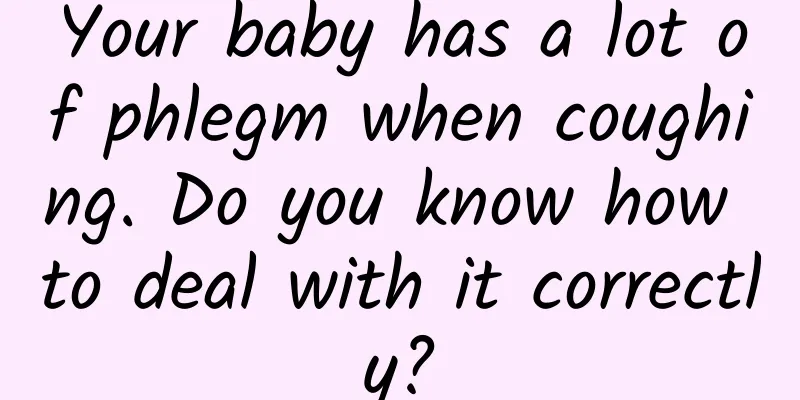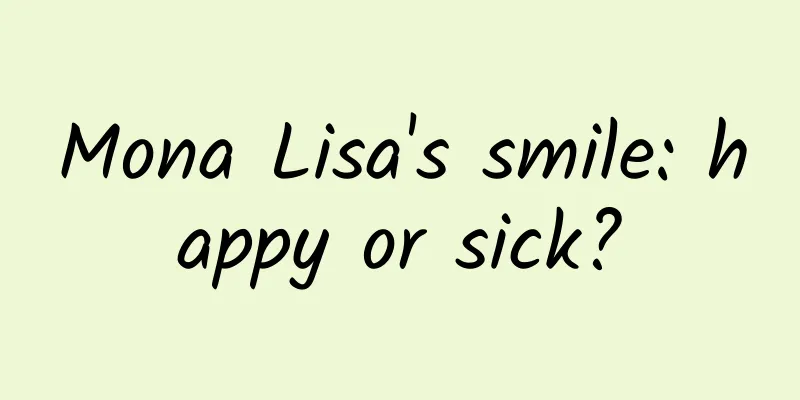Your baby has a lot of phlegm when coughing. Do you know how to deal with it correctly?

|
The child often coughs, and the parents are very worried. They go to the hospital several times and get a lot of medicines, but the child still doesn't get better. What's going on? Do children really need to take so many medicines? The following editor will introduce the causes and consequences of children's coughs and the choice of medicines. 1. Is cough a disease? First of all, I need to popularize a point of view to everyone. Coughing is a common symptom of the normal respiratory tract. It is a protective physiological reflex behavior caused by biological, physical, chemical and other stimulations to the trachea, bronchial mucosa or chest cavity. Clinical studies have shown that 50% of children with coughs will recover within 10 days, and only 10% will develop chronic coughs. Therefore, if the cough is not particularly severe and does not affect daily life, the editor recommends that parents do not blindly use medication. However, if a child has a cough accompanied by severe clinical manifestations such as respiratory disorders, high fever, and vomiting, it is best to send the child to the doctor as soon as possible. 2. Dry cough or wet cough? You must distinguish Dry cough occurs when there is little or no sputum, and the throat is dry and itchy. Pharyngitis, bronchitis or viral colds can all cause dry cough symptoms. Antitussive drugs can be used while treating the primary disease. The symptoms of wet cough are coughing accompanied by a large amount of sputum, often accompanied by runny nose, fever and other symptoms. When treating it, it is necessary to "expel the phlegm first, then stop the cough." 3. Try not to take cough medicine Cough suppressants are divided into centrally acting cough suppressants and peripherally acting cough suppressants. Central antitussive drugs: drugs that directly inhibit the cough center in the brain to exert an antitussive effect. Common drugs include pentoxyverine and dextromethorphan. These drugs can cause symptoms such as dizziness and drowsiness after taking them, which generally disappear on their own after stopping the drug. Peripheral antitussive drugs: They suppress coughs mainly by inhibiting a certain part of the cough reflex arc. Common drugs include narcotine and benproperine. These drugs have a weak antitussive effect, but are non-addictive and relatively safe. The treatment of children's cough should focus more on the cause of the disease. Generally, cough suppressants are not given to relieve cough. If the cough seriously affects the child's daily life, cough suppressants can be used appropriately under the guidance of a doctor. 1. The dosage of medicines for children needs to be accurate. For liquid preparations, do not use spoons, bowls or other utensils without scales. Try to use a measuring cup with scales to administer the medicine. 2. It is prohibited to use opioid cough suppressants containing caffeine, codeine, etc. According to the Announcement of the State Food and Drug Administration on the Revision of the Instructions for Cold Medicines Containing Codeine (No. 63 of 2018), medicines containing opioid ingredients for cough caused by colds or allergies are prohibited for use in children and adolescents under the age of 18. 3. Do not let children use adult drugs at will. Children are not "small versions of adults" and have significant differences from adults in drug absorption, distribution, metabolism, and excretion. Most adult drugs have not been tested in pediatric clinical practice, and the effectiveness and safety of drugs in children are unknown. Therefore, when choosing cough medicines, children's medicines should be selected as much as possible. 4. Correct use of expectorants Common expectorants for children include ambroxol hydrochloride, acetylcysteine, guaifenesin, etc. Most expectorants are relatively safe, but the following issues still need to be noted: 1. Be alert to the occurrence of adverse reactions to ambroxol. According to the notice of the State Drug Administration: From January 1, 2011 to December 31, 2011, the case report database of the National Center for Adverse Drug Reaction Monitoring received a total of 2,973 reports of adverse drug reactions/events related to ambroxol hydrochloride injection, including 169 reports of serious cases. The top three systems involved in serious adverse reactions/events are: systemic damage, respiratory system damage, and general damage to the cardiovascular system, which together account for 74.63% of the total number of cases. In addition, there are skin damage, central and peripheral nervous system damage, gastrointestinal system damage, etc. Among the serious cases, 79 cases were children (accounting for 46.75%). 2. It is recommended to use single-ingredient guaifenesin preparations as much as possible, and it is not recommended for children under 2 years old. Guaifenesin on the market is often combined with antitussive drugs to make compound preparations, and the antitussive ingredients in them will inhibit the elimination of sputum in children. 3. Yellow sputum in children is not directly related to bacterial infection. Do not use antibiotics at will and follow the doctor's advice. The abuse of antibiotics in children is extremely harmful and can lead to intestinal flora imbalance, bacterial resistance, gastrointestinal adverse reactions, etc. If you suspect that your child is infected, go to the hospital as soon as possible to find out the cause and use the medicine under the guidance of a doctor. A child's cough is not a disease. Parents, don't panic. Don't take opioids. Use expectorants correctly. A short cough can heal on its own. See a doctor if the cough persists. References 1. Hong Jianguo. Pay attention to the identification of causes of cough in children and the selection of medication[J]. Chinese Journal of Practical Pediatrics, 2016, 31(03): 161-164. 2.Hay AD, Wilson A, Fahey T, et al. The duration of acute cough in pre-school children presenting to primary care: a prospective cohort study[J]. Family practice, 2003, 20(6): 696-705. 3. Lv Xiaodong, Asthma Group, Chinese Society of Respiratory Diseases, Chinese Medical Association. Diagnosis and treatment guidelines for cough (2015)[J]. Chinese Journal of Tuberculosis and Respiratory Diseases, 2016, 39(5):323. 4. Wang Song, Xiao Zhiqin, Ye Rongming. A case of severe allergic reaction caused by ambroxol injection in children[J]. Chinese Journal of Modern Drug Application, 2020, 14(16): 225-226. 5. Announcement of the State Drug Administration on the revision of the instructions for cold medicines containing codeine (No. 63 of 2018) https://www.nmpa.gov.cn/directory/web/nmpa/xxgk/ggtg/ypshmshxdgg/20180906165801678.html (Shenzhen Children's Hospital author: Cheng Junjie; reviewer: Zhan Min) |
>>: Talking about Fever in Children
Recommend
What festival is it to eat glutinous rice cake? Why do we need to beat glutinous rice cake?
Ciba is not only a delicacy, but also a blessing ...
What are the symptoms of breast disease?
Many women of childbearing age who are breastfeed...
[Previous article] The many complications of rabies
This is the 3623rd article of Da Yi Xiao Hu 1. Ca...
What glass should be used to drink champagne? When is the best time to drink champagne?
Champagne is a very famous aperitif and the king ...
What causes breast dysplasia in adolescent girls?
Because the problem of poor breast development in...
What causes acne during pregnancy?
Acne during pregnancy is a symptom that many preg...
Why do boys have personalities like girls? How can boys change their personalities like girls?
Many people will find in their lives that some bo...
Why are the left and right breasts different sizes?
Some women have breast problems, so female patien...
A guide to maintaining the uterus during the five stages of a woman's life
The uterus is one of the important organs in the ...
Will taking painkillers delay your period?
Every woman feels differently during menstruation...
What should I do if my uterus is more severe?
Some female friends always suffer from dysmenorrh...
My wrist hurts, I can’t wring out a towel, and I can’t hold up the bed when I get up. What’s wrong?
Author: Chen Shanlin, Chief Physician, Beijing Ji...
The time for complete weaning is
A baby is born a baby. When a baby is just born, ...
There are three reasons for abdominal effusion in women
Under normal circumstances, there is a small amou...
How long does it take to get your period after a caesarean section?
After a pregnant woman gives birth, her uterus ne...

![[Medical Q&A] Is mineral water mineral water?](/upload/images/67f0f0426df07.webp)







